If you want to leave the ridiculousness and heartbreak of 2016 behind and remember how to laugh, love and appreciate the world again, you should come to the New Beverly Cinema on January 1st & 2nd, 2017 and watch two of the best films ever made. This is not hyperbole. Without Howard Hawks’ His Girl Friday (1940) and George Cukor’s The Women (1939), representation of women on-screen would be entirely different and the scores of modern films that have either borrowed a scene, a character or the entire plot (so many remakes!) would not exist. While the screwball comedy genre itself was quite groundbreaking in the way in which it advanced the idea of women as dynamic characters and not simply romantic puppets, these two Rosalind Russell vehicles revolutionized the cinema in a way that others had not. Flat out, this double feature is revolutionary and trailblazing as far as history and representation is concerned and radically enjoyable.
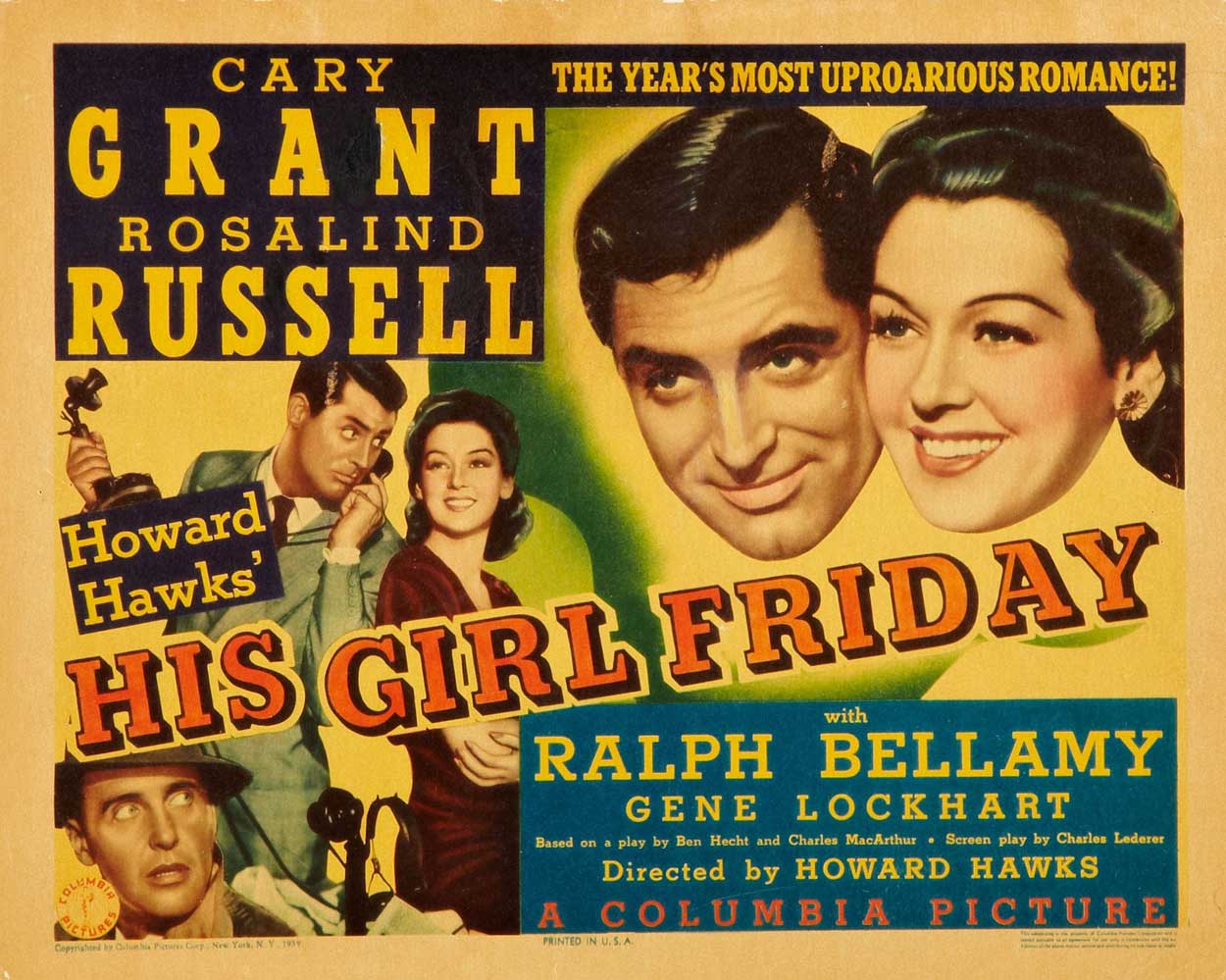
Beginning the evening is a newly struck 35mm print of His Girl Friday, a film with a fascinating gender-switch production history. Based on the 1928 stage play The Front Page by Ben Hecht and Charles MacArthur, the character of Hildy Johnson (played by Rosalind Russell) was originally written as a man. The Front Page has been adapted into two feature films (1931 and 1974), three television movies going back as far as 1945 (the other two were in 1948 and 1970), and a television series in 1949. It was also a featured episode of “Broadway Television Theater,” a show that platformed theatrical works on TV. But Howard Hawks was the only one, out of all of these, that took the story of what could be seen as a buddy-reporter film and reworked it to center a powerful and stimulating female. While the other Front Page-related works should not be unappreciated or unloved, it is His Girl Friday that really shifted the gears and changed film history for the better.
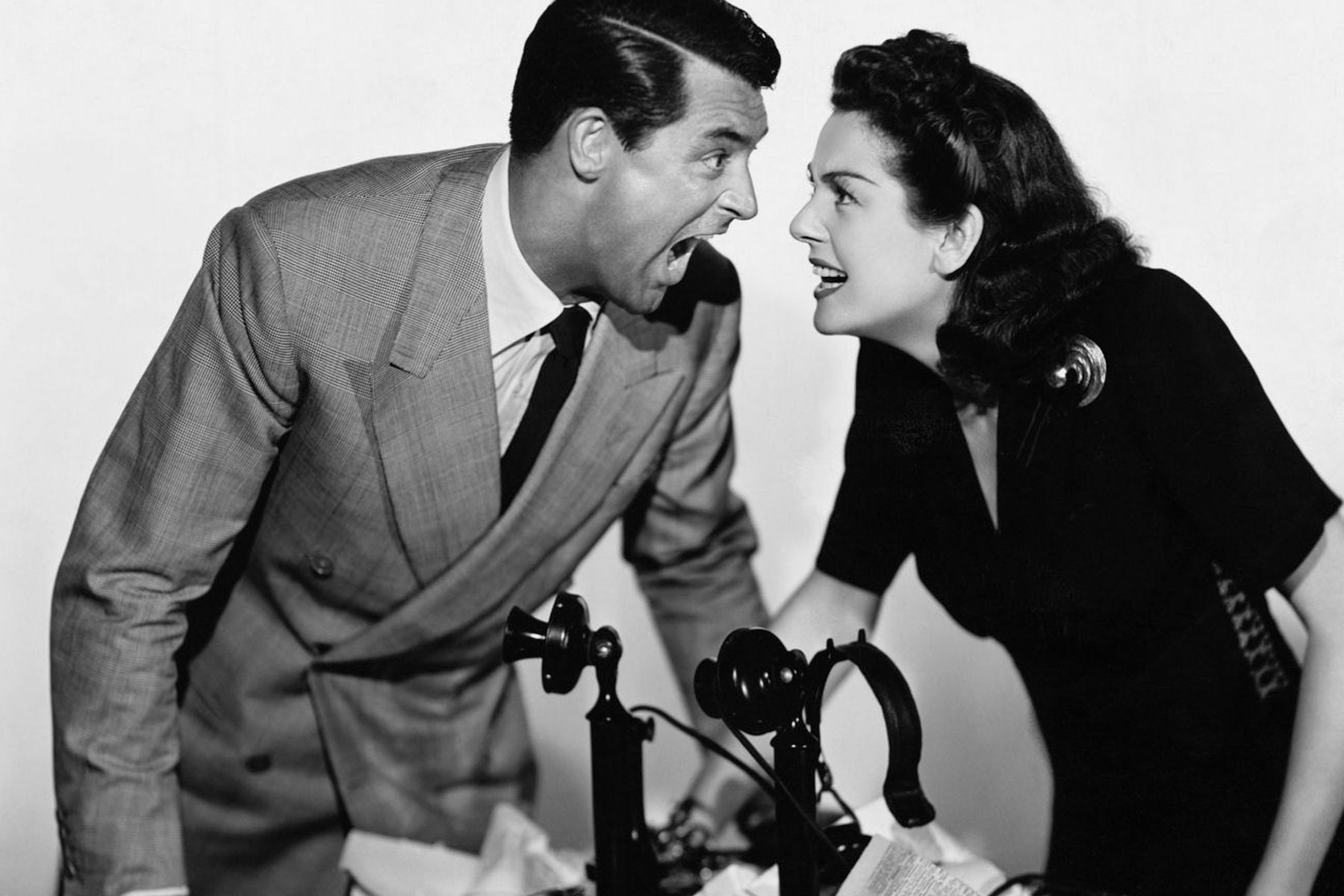
The character that playwrights Hecht and MacArthur had named Hildebrand “Hildy” Johnson and described as a “vanishing caballero type – the lusty, hoodlumesque, half-drunken caballero that was the newspaperman of our youth” becomes, in this film, Hildegarde “Hildy” Johnson, a sharp-tongued, quick-witted badass woman who served as a real challenge for her male colleagues to keep up with – especially her ex-husband, Walter Burns (Cary Grant). There are multiple references to Hildy as a “newspaperman” and it becomes clear very early on that she can easily out “boys in the backroom” the boys in the backroom. The New York Times review in 1940 was actually surprised that Hildy had not always been a female character, let alone the impossibly brilliant Rosalind Russell. Frank S. Nugent wrote, “it is hard to believe that Hecht and MacArthur were not thinking of Rosalind Russell, or someone equally high-heeled, when they wrote about the Hildy Johnson who once had a printer’s ink transfusion from a Machiavellian managing editor and never again could qualify as a normal human being.”
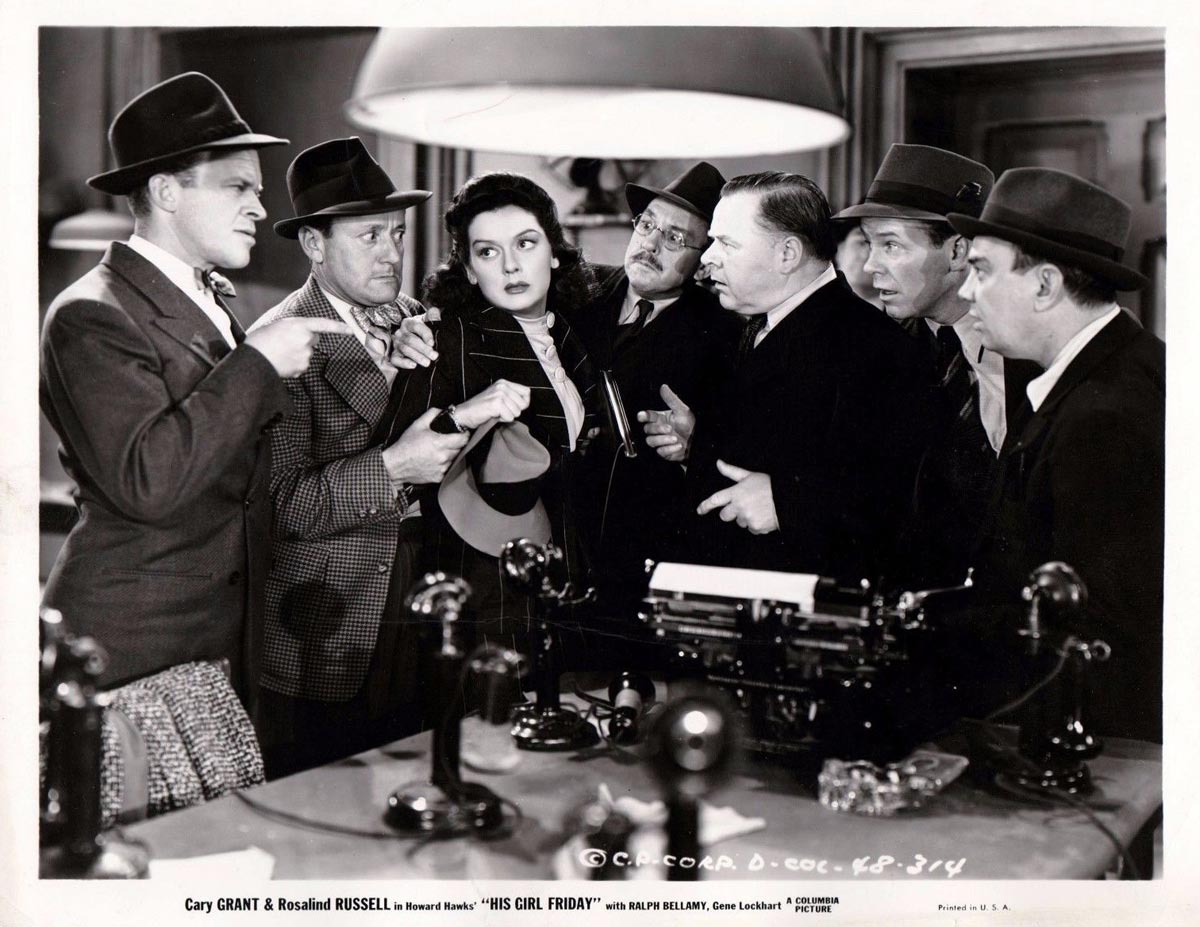
The Charles Lederer-script in tandem with Hawks’ strident directorial manner allows for the very ideas of masculinity and femininity to be questioned at length. His Girl Friday is the perfect example of a film that underscores the idea that gender (male or female) is non-binary, performative and not fixed. Donald Jellerson and Nathan Anderson keenly observed that Hildy Johnson is “in the film’s terms, both woman and man: she is the best “newspaper man” in the room precisely because she can give her stories a “woman’s touch”- stories which, according to Walter, need “heart.” The fact that Hildy so often frustrates the binary systems offered by the film suggests that she functions as an agent of… instability within a seemingly natural and logical system of meaning, we can understand Hildy’s embodiment of both male and female, both masculinity and femininity.”
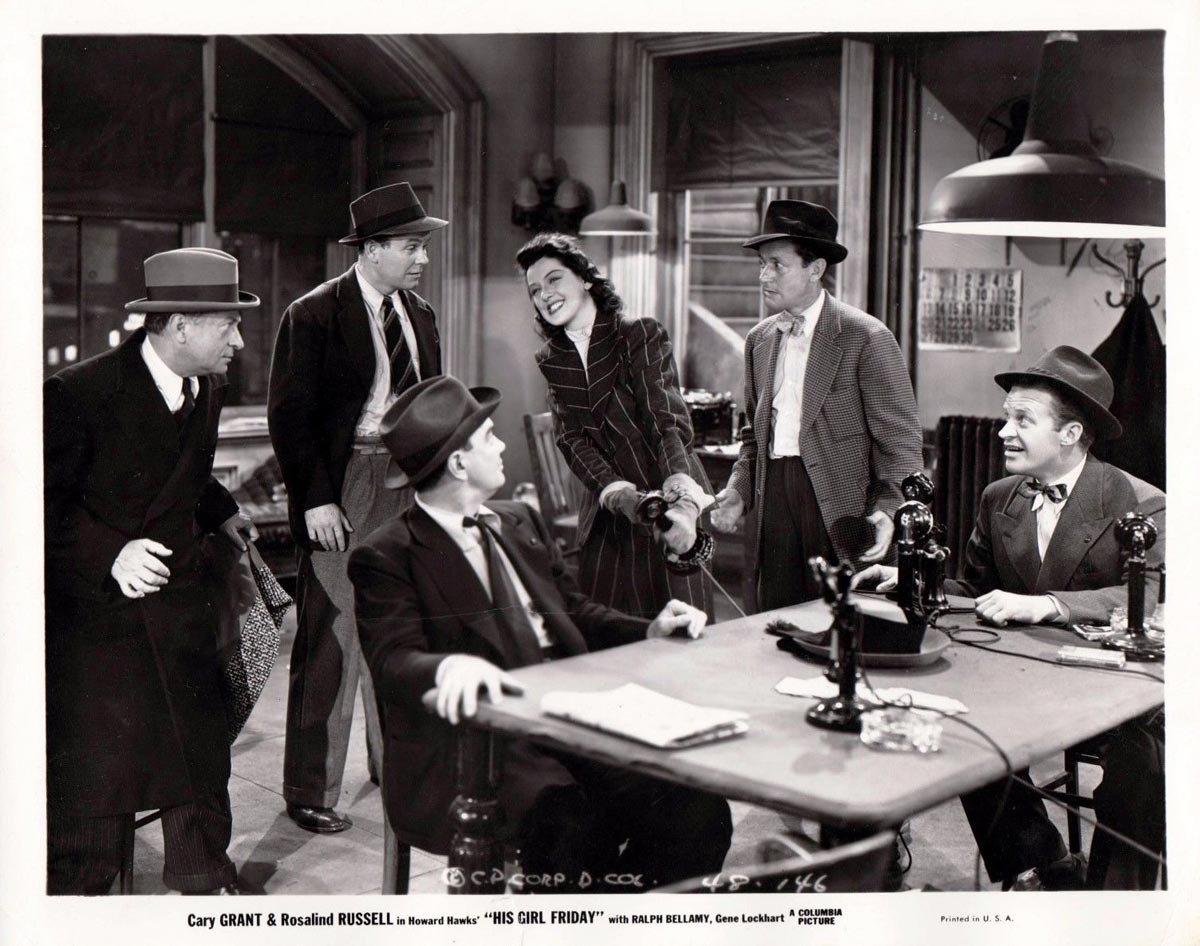
To take a step back, let’s remember that this was released in 1940 and while women had certainly moved forward in the world, selling war bonds and working in factories to help produce equipment for the boys overseas was perhaps not every woman’s dream. The representation of a strong and self-possessed woman who could divorce Cary Grant (!!!), smoke and drink as she chose, and have a working identity as an investigative journalist was a big deal. In many ways, it is still a big deal. To watch His Girl Friday, you can see precisely the part where most romantic comedies veer off into overly sweet (and certainly not female-strengthy) territory, leaving many audience members behind. While His Girl certainly contains a love story, it is neither saccharine nor cloying in the way that romcoms can often be. The dialogue stays incisive, quick and strong. This is certainly a movie to see multiple times because the chances of you missing a truly excellent line due to belly-ache-inducing laughter are pretty good.
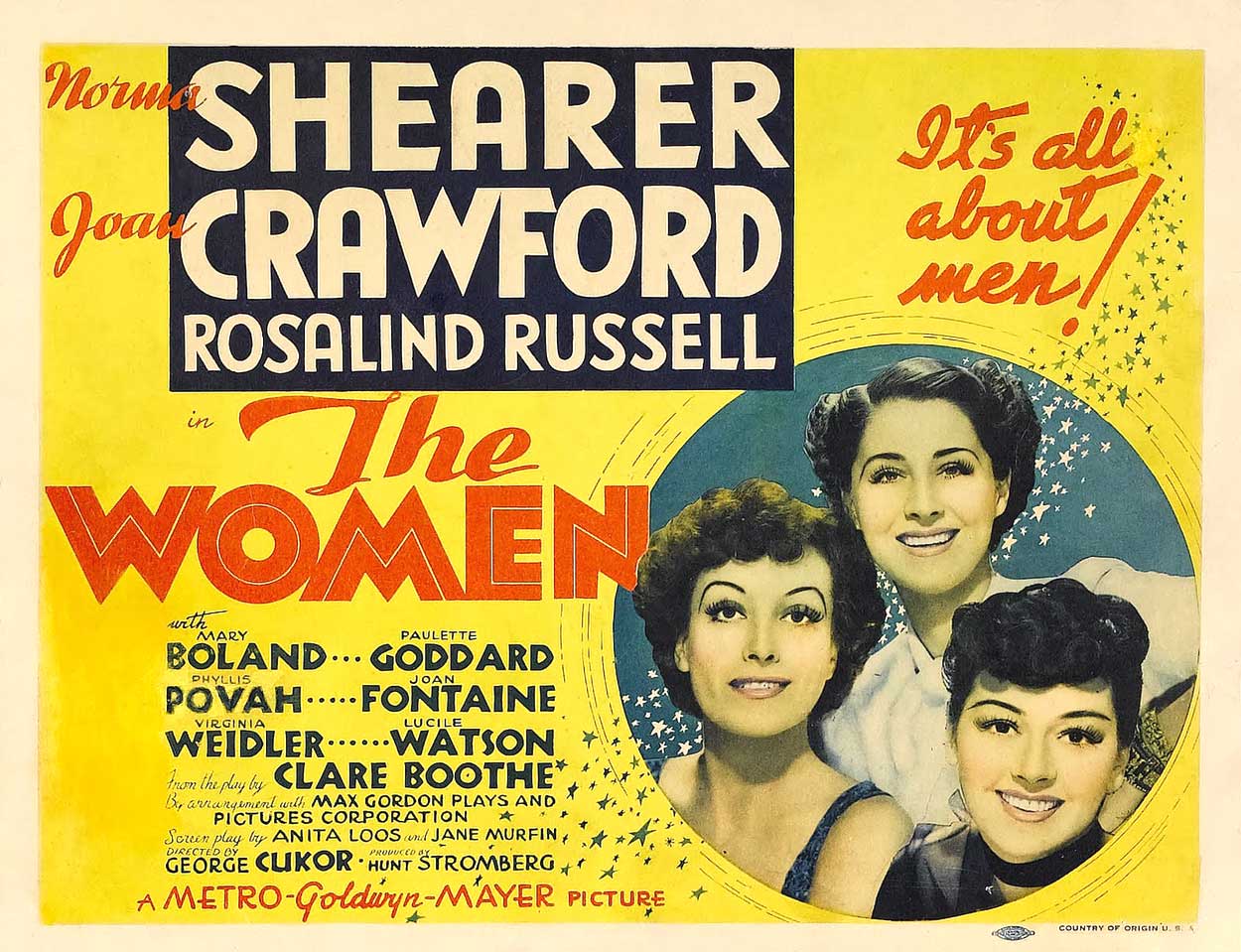
Taking a step back one more year, we have the George Cukor masterpiece The Women. Based on a play by Clare Booth Luce, the film’s cast was made up of 135 women and no men. What? Yes. Apparently even the animal players within the film are female! A no-holds-barred look at women’s relationships to each other, themselves and men, it’s a critical achievement on a variety of levels.
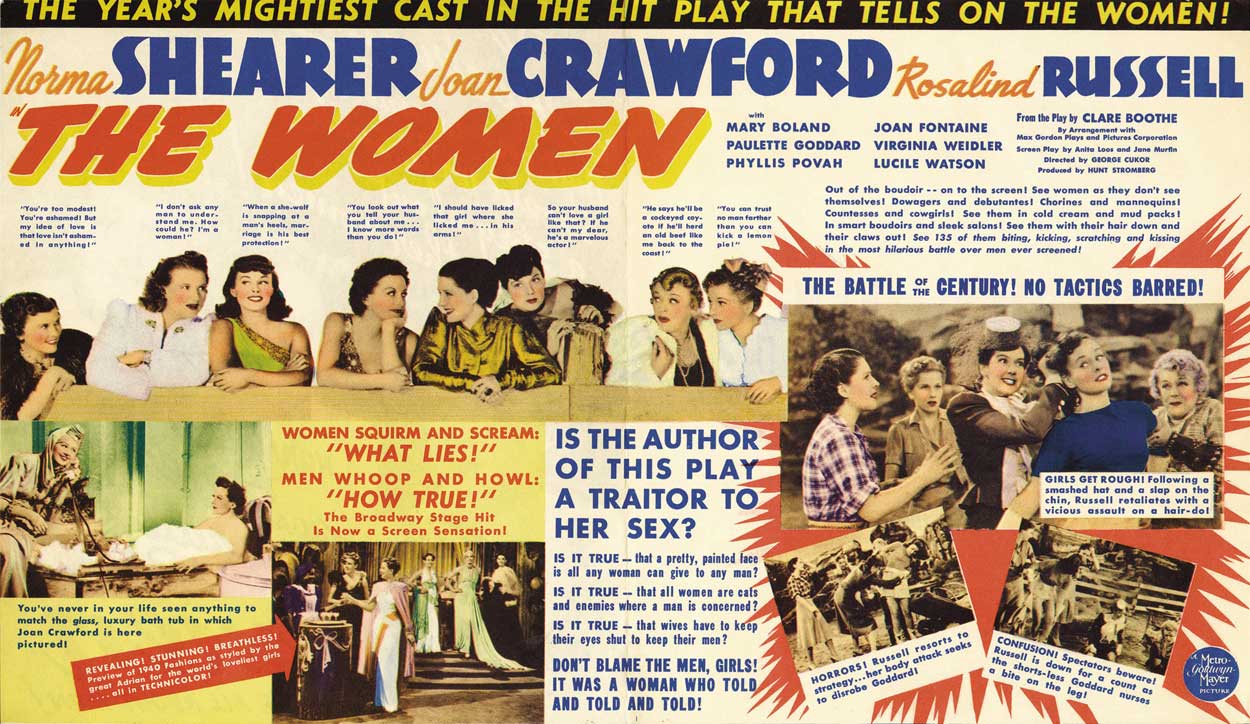
One of the more famous aspects of the film, aside from Oscar Wilde-level wit and acidic dialogue parried back and forth between screen goddesses like Norma Shearer, Rosalind Russell, Joan Crawford, Joan Fontaine and Paulette Goddard, is the fashion show sequence. While The Women is a black and white film, this stunning section is enough to take your breath away and examine what you are watching and why this sequence in particular.
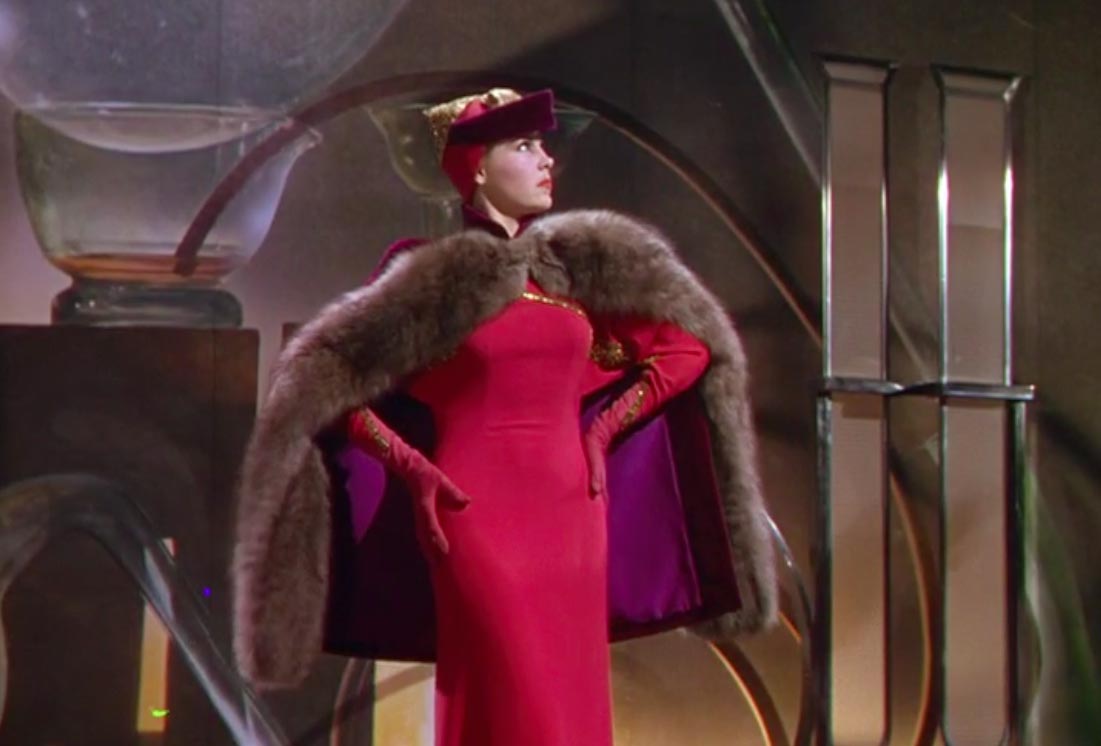
The combination of black and white and color was quite radical for the time and, with the film’s continued watchability, it remains so. Shot in Technicolor, the fashion show highlights costume designer Adrian’s beautiful work, attention to women’s style and his color usage. While Cukor himself said he thought the sequence was pointless and more of a “front office” decision, it is an unusual aspect of this film and worth looking at. Cukor’s rejection of style and fashion as a critical component of The Women is hardly believable given the attention to detail that was given to creating each woman’s aesthetic identity.
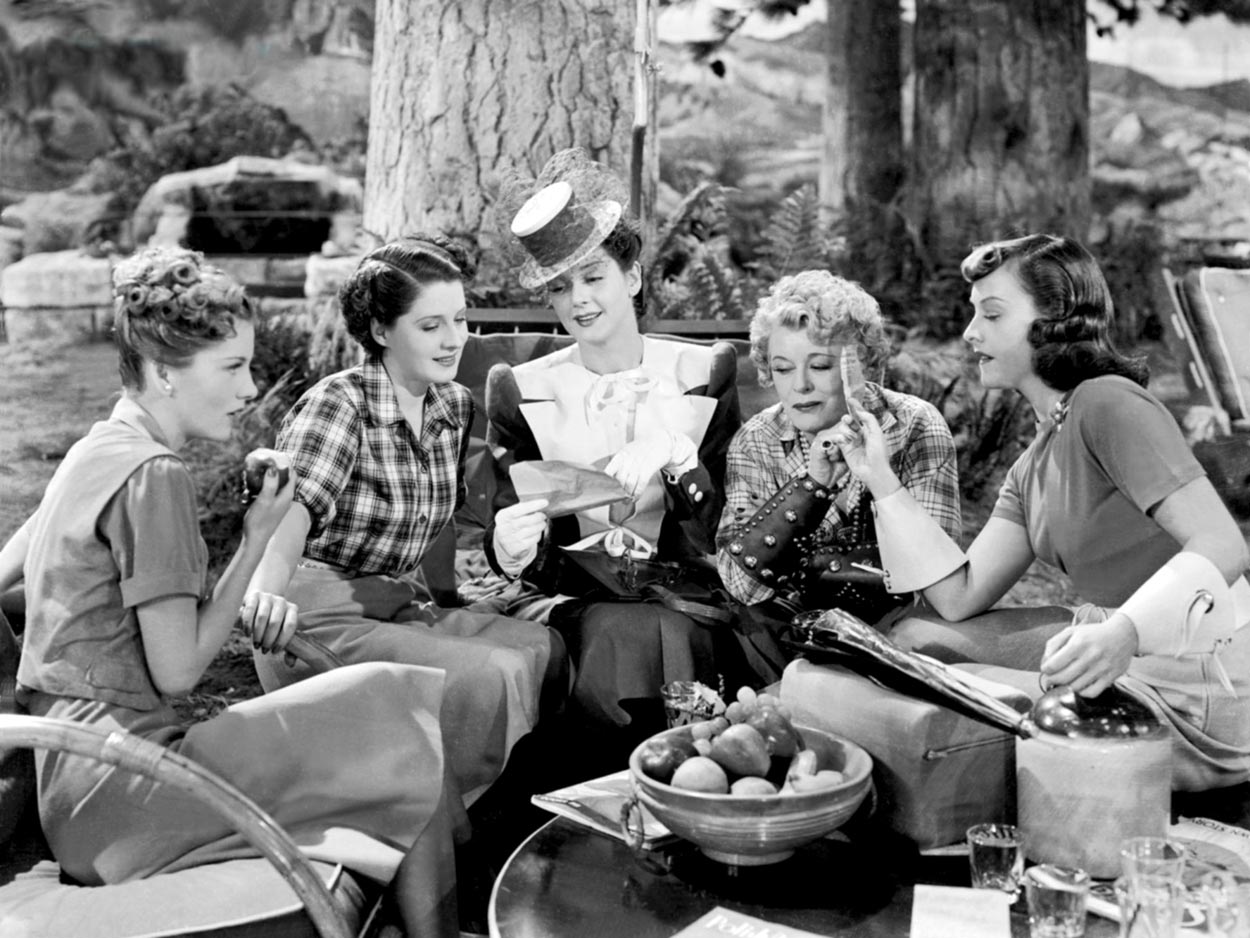
Any film that features Joan Crawford saying, “There’s a name for you ladies, but it isn’t used in high society… outside of a kennel,” is clearly hot material. While the Production Code Administration was heavily out and in full force at the time, The Women gets in and around all the nooks and crannies that it can. Like His Girl Friday, divorce is a main subject of inquiry. However, so is adultery, motherhood, aging and sexual pleasure. The one thing that gets little to no attention is masculinity. While the tagline for the film is “It’s all about men!” that’s the big joke: it’s really not. Although the film certainly indulges in enough compulsive heterosexuality and marriage/relationship-promotion that it was allowed release, the focus on women and certain women’s issues is pioneering.
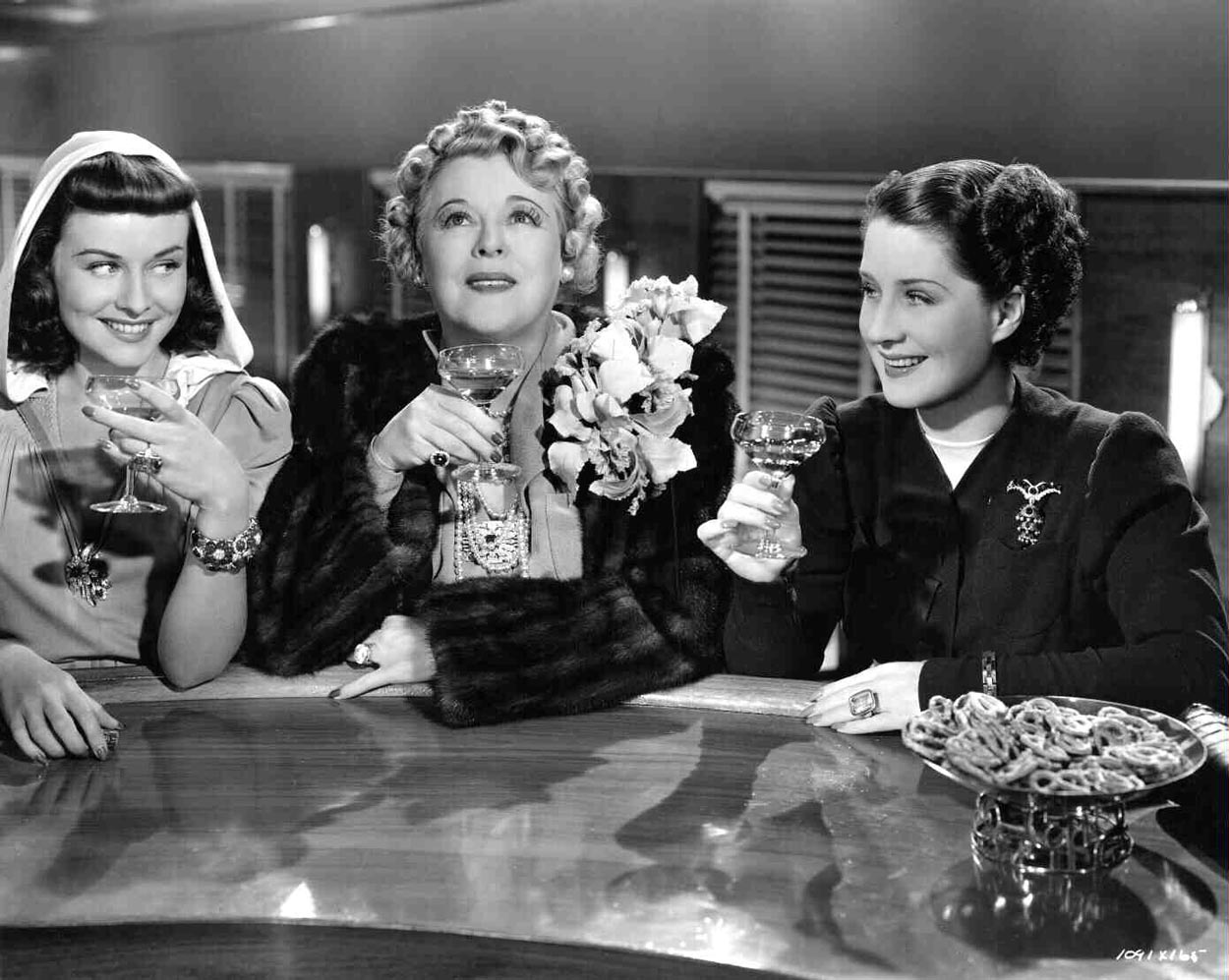
While Joan Crawford’s portrayal of Crystal Allan is so delicious that one could watch an entire film series based upon her character alone, it’s worth noting some of the more obscure character-actress talent. Mary Boland, who plays Countess De Lave, strikes gold with lines like, “This sweet thing is getting her first divorce, too! She’s a very dear friend of mine… What did you say your name was again darling?” but had a long career that began in the silent era. While not much can beat Boland, Marjorie Main (the future Ma Kettle of the Ma and Pa Kettle films)’s role as Lucy, the head of the dude ranch, is pretty wonderful.
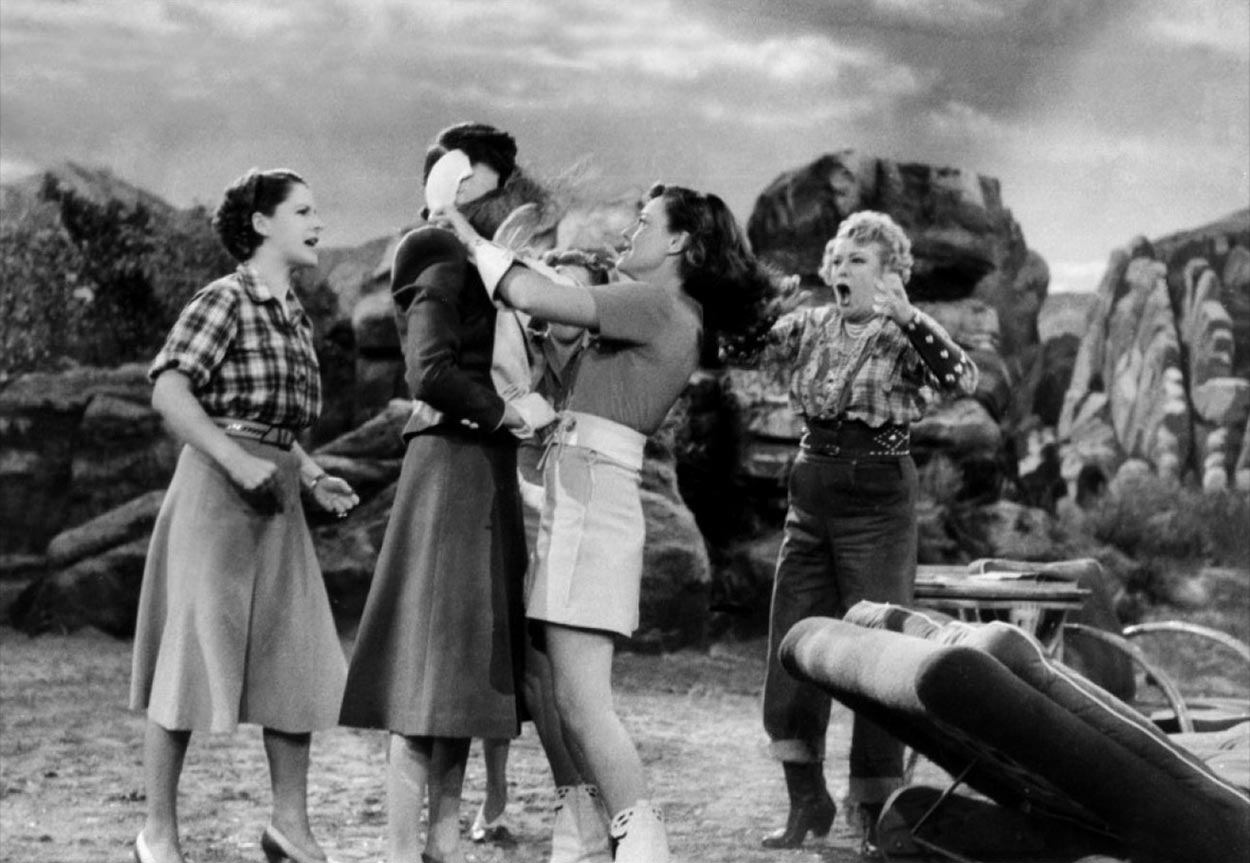
Specifically, the ranch fight scene allows Main to shine while it (literally) undresses the characters and divests them of their high fashion items and aesthetic “looks” that have been so carefully sculpted. It’s most certainly one of the funniest and best-written catfights in classic Hollywood cinema. With references to hitting women in glasses, the physical destruction of obviously expensive high-fashion costumery and knock down, drag-out brawling, this fight scene primarily between Sylvia Fowler (Rosalind Russell) and Miriam Aarons (Paulette Goddard) works to erase the same gendered stereotypes that His Girl Friday does. As these women tear each other’s clothes, bite and scratch and wrestle one another, we are given the opportunity to investigate politeness, femininity and how society (high, low or somewhere in between) has classified the female gender as “too polite to kick ass.” There is genuinely nothing like watching Goddard and Russell duking it out while hissing razor-sharp dialogue. Don’t miss it.
This is the best way to begin 2017 – with laughter, joy and kick ass women. Let’s open the year right!


